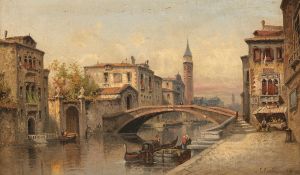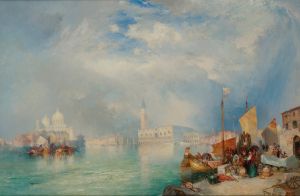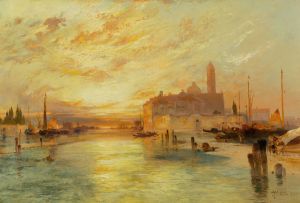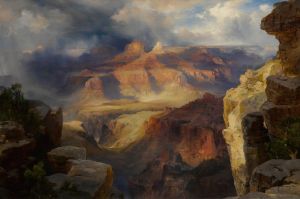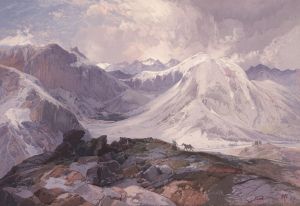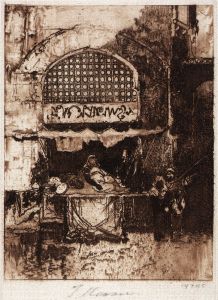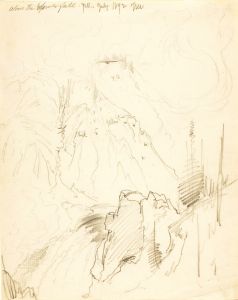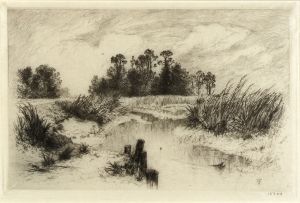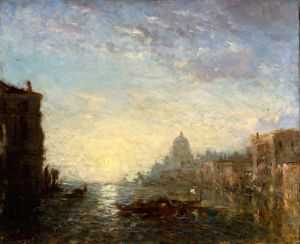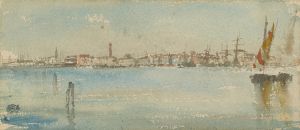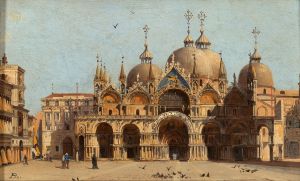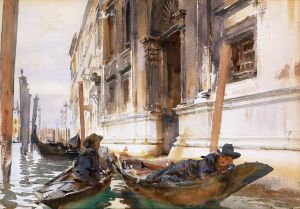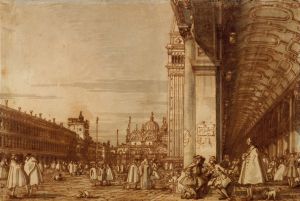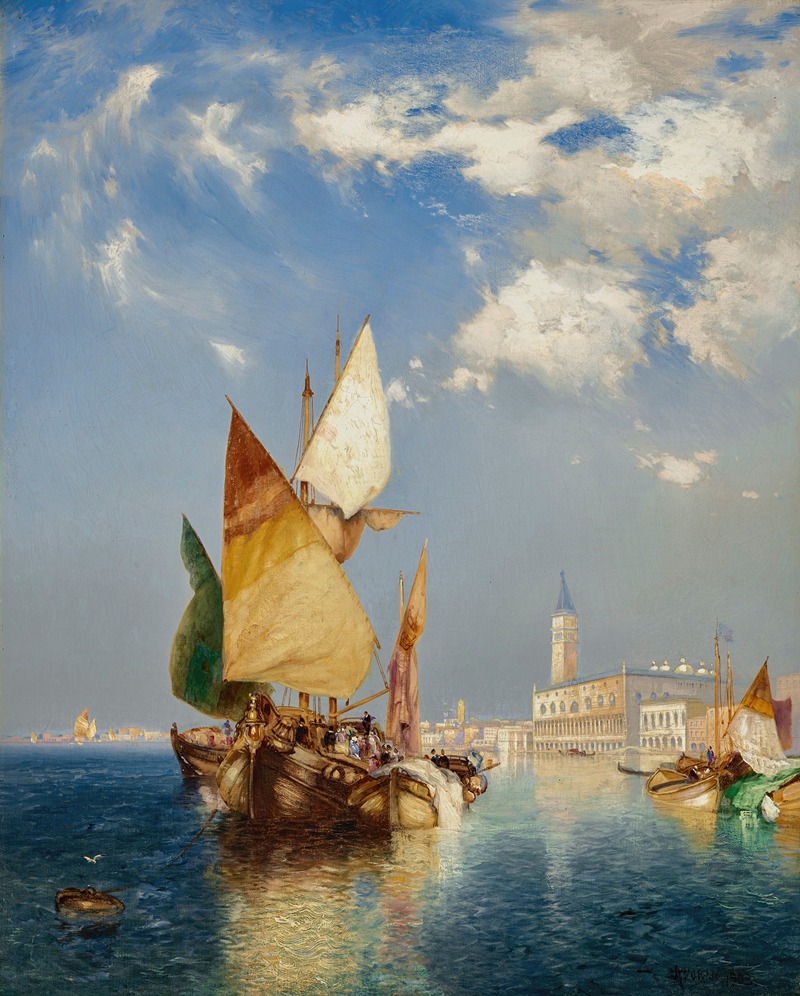
The Grand Canal, Venice
A hand-painted replica of Thomas Moran’s masterpiece The Grand Canal, Venice, meticulously crafted by professional artists to capture the true essence of the original. Each piece is created with museum-quality canvas and rare mineral pigments, carefully painted by experienced artists with delicate brushstrokes and rich, layered colors to perfectly recreate the texture of the original artwork. Unlike machine-printed reproductions, this hand-painted version brings the painting to life, infused with the artist’s emotions and skill in every stroke. Whether for personal collection or home decoration, it instantly elevates the artistic atmosphere of any space.
"The Grand Canal, Venice" is a painting by the American artist Thomas Moran, created in 1908. Moran, born in 1837 in Bolton, England, is renowned for his landscape paintings, particularly those depicting the American West. However, he also created numerous works inspired by European scenes, with Venice being a recurring subject in his oeuvre.
Thomas Moran's fascination with Venice can be traced back to his travels in Europe. He first visited Venice in 1866 and was captivated by the city's unique light, architecture, and waterways. This initial visit left a lasting impression on Moran, influencing many of his later works. "The Grand Canal, Venice" is one such painting that showcases his admiration for the city's beauty.
The painting depicts the Grand Canal, Venice's main water thoroughfare, which winds through the heart of the city. The Grand Canal is lined with opulent palaces, churches, and other historic buildings, many of which are visible in Moran's composition. The artist's use of light and color captures the ethereal quality of Venice, with the reflections on the water adding a sense of movement and life to the scene.
Moran's technique in "The Grand Canal, Venice" demonstrates his mastery of both detail and atmosphere. The painting is characterized by its vibrant palette and meticulous attention to architectural elements. The sky is rendered in soft hues, suggesting either dawn or dusk, which enhances the romantic and timeless quality of the scene. The water of the canal is depicted with a shimmering effect, reflecting the buildings and the sky, creating a harmonious and serene composition.
Throughout his career, Moran was influenced by the works of J.M.W. Turner, the British artist known for his expressive and atmospheric landscapes. This influence is evident in Moran's treatment of light and color in "The Grand Canal, Venice." However, Moran's work also stands out for its clarity and precision, which he combined with a sense of grandeur and drama.
"The Grand Canal, Venice" is part of the collection at the Smithsonian American Art Museum in Washington, D.C. The painting is a testament to Moran's ability to capture the essence of a place, transporting viewers to the serene and picturesque canals of Venice. It remains a significant example of his European-inspired works and highlights his versatility as an artist.
In summary, "The Grand Canal, Venice" by Thomas Moran is a notable painting that reflects the artist's deep appreciation for the beauty of Venice. Created in 1908, it showcases Moran's skill in capturing light, color, and architectural detail, influenced by his travels and the works of J.M.W. Turner. The painting is housed at the Smithsonian American Art Museum, where it continues to be admired for its artistic and historical significance.





